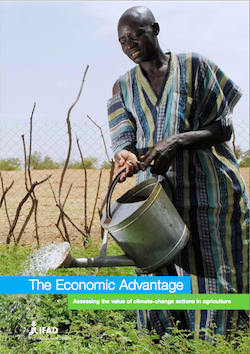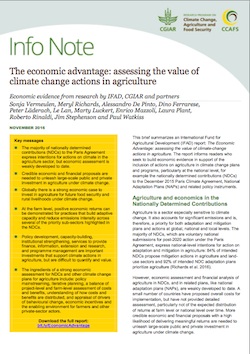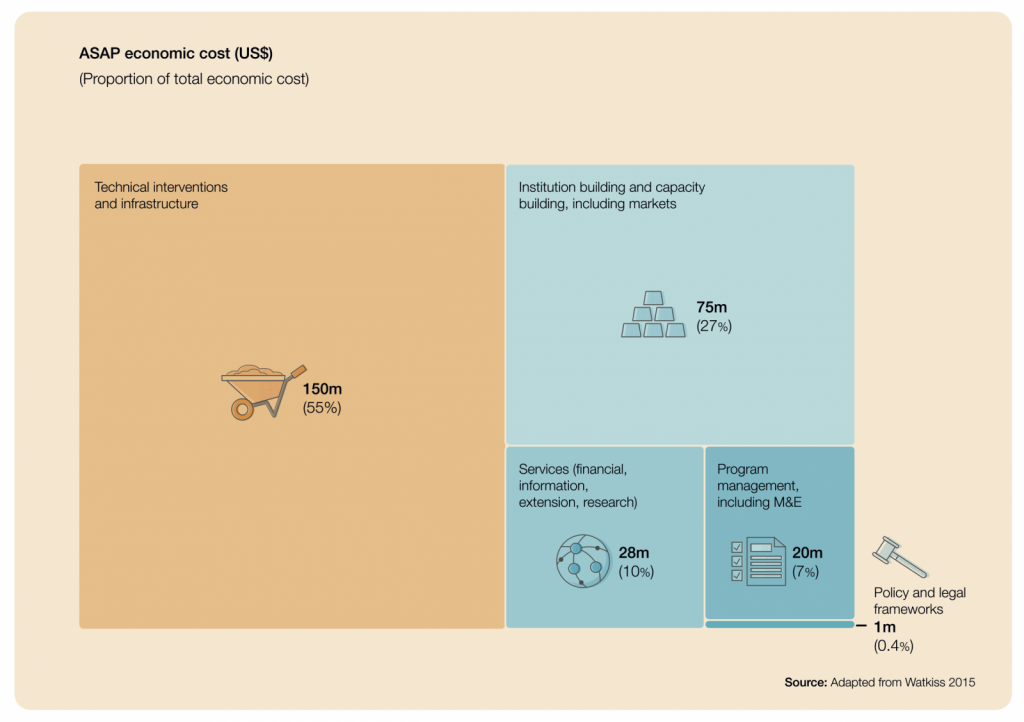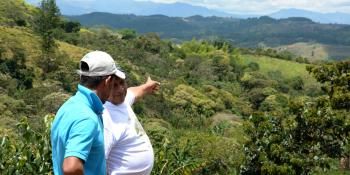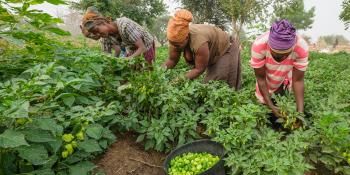Investments in climate-proof farming will pay off for future food security
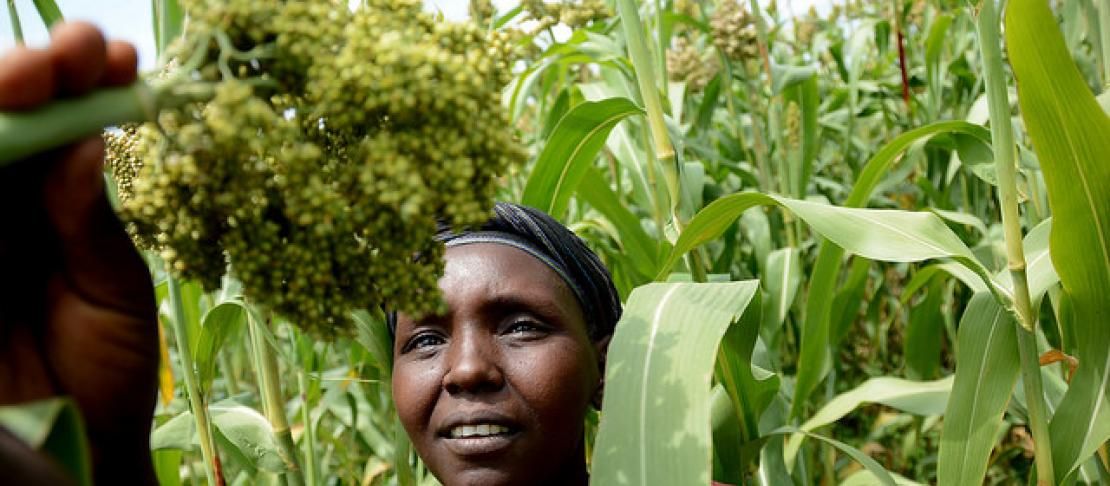
New report clarifies economics of adapting smallholder agriculture to climate change
With the Paris Climate Agreement now in force, participating countries are compelled to take action on climate change. Agriculture has emerged as an important area for action: More than 80 % of climate pledges propose mitigation actions in agriculture and land-use, while 92 % of adaptation plans prioritize agriculture. Can countries raise the finance needed to make good on these pledges?
full report | summary info note |
Economic and financial analyses are just one tool in making decisions on actions in the face of climate change. But they can be key to changing minds and raising funds. “Give us the ammunition,” said Chebet Maikut, Commissioner of Uganda’s Climate Change Department, referring to data on the value of agriculture investments for climate adaptation.
Mr. Maikut spoke on Wednesday at the launch of a new report at the UN climate talks (COP22) in Marrakech. The Economic Advantage: assessing the value of climate-change actions in agriculture shares new economic evidence that supports the inclusion of actions on agriculture in climate change plans and programs, with evidence from the International Fund for Agriculture Development (IFAD), CGIAR and partners.
“Globally there is a strong economic case to invest in agriculture for future food security and rural livelihoods under climate change,” according to lead author Sonja Vermeulen in a complementary summary published by the CGIAR Research Program on Climate Change, Agriculture and Food Security (CCAFS). The report shows how investments can pay off at the country level, at a commodity level, and at a farm level, offering a strong package of evidence for decision-makers and funders alike.
Country-level investments yield big returns
The authors looked at IFAD’s Adaptation for Smallholder Agriculture (ASAP) programme, the world’s largest programme for smallholder farmers’ adaptation.
The programme’s 32 investments at the country level cover five continents and take very different approaches, from strengthening farmer organisations through to controlling erosion, improving grain storage, or upgrading fishing facilities. But all the investments are set to deliver positive returns, with benefit-to-cost ratios of up to 7:1 going back to small-scale producers over the project lifespan of 20 years. This holds true across a range of future climate change scenarios, including high-end impacts that result in greater crop losses.
This is good news for investors, funders and governments. “Agriculture doesn't have to be a risky investment, even under climate change,” said Ilaria Firmian from IFAD’s Environment and Climate Division. Importantly, the analysis revealed that investments must cover a wide spectrum of interventions to be successful. On-farm practices and technologies are important but will only reach their full potential if large investments are also made in capacity building, improved services, markets, community development and gender transformation. Data from the ASAP program shows almost half of investments go towards these important building blocks (figure 1).
Figure 1 Globally aggregated distribution of spending across ASAP-supported activities. Source: Adapted from Watkiss 2015 in Vermeulen et al. 2016.
Farmers cash in on climate-resilient practices
Country submissions to the Paris agreement proposed priority sub-sectors for agricultural investment: soil and land, water crops, livestock, fisheries and trees. The report summarises current economic information on the costs and benefits of each of these, with examples of successful investments in action. Small investments can really pay off for farmers and for rural development more generally, if correctly targeted. For example in Uganda and Kenya, farmers gained US$ 62 – US$ 122 per year by supplementary feeding livestock with nitrogen-fixing Calliandra species.
Researchers who study these projects often find that additional support is needed to make sure that farmers can benefit from these investments in an equitable way. Peter Läderach of the International Center for Tropical Agriculture (CIAT), shared experience from Vietnam, where rising sea levels have spurred farmers to switch from growing rice to growing coconut and sugarcane. However, further investigation revealed that only the richest farmers were able to make the leap – the poorer farmers struggled to switch, and were left behind. This highlights the importance of building social inclusion into all program design, so that the most vulnerable, including women, can truly benefit and thrive.
Making the economic case for agriculture often needs to go beyond simple financial or cost-benefit information. To achieve real change at scale in our farms and food chains, to meet climate change problems of the future, the right incentives need to be in place for farmers and companies. Complementing cost-benefit analysis with insights into non-economic drivers of behaviour – perhaps local culture, or how information flows – can maximize the chances of success.
Video: Interviews with Sonja Vermeulen (CCAFS), Ilaria Firmian (IFAD), and Imelda Bacudo (GIZ-ASEAN)
What next for food and farming in an uncertain future?
Now, more than ever, countries must act on their Paris commitments. The emphasis on agriculture in national plans is a strong point of departure.
“Countries want to access climate finance to put agriculture adaptation plans into action” said Imelda Bacudo, from the ASEAN-German Programme on Response to Climate Change.
A similar story is unfolding in Uganda, where agriculture is the lifeblood of the Ugandan people. “The government is prepared to spend 30% of its budget to address climate impacts,” said Mr. Maikut, who called on international funders to make up the rest.
Armed with the right data and evidence, developing countries will be able to more effectively mobilize this finance. As moderator Laurie Goering, from the Thompson Reuters foundation, eloquently concluded: the costs of not investing in adaptation in agriculture are huge. With farmers on the frontline of climate impacts, there is no time to waste.
Read more
Full report - Vermeulen S, Richards M, De Pinto A, Ferrarese D, Läderach P, Lan L, Luckert M, Mazzoli E, Plant L, Rinaldi R, Stephenson J, Watkiss P. 2016. The economic advantage: assessing the value of climate change actions in agriculture. Rome, Italy: International Fund for Agricultural Development (IFAD).
Summary info note - Click to download
UN News Center - Small farmers can earn big returns by investing in climate adaptation, new UN report finds
IISD reporting services - Click for summary
Detailed side event programme - Click to read more
Vanessa Meadu is global Communications and Knowledge Manager for the CCAFS Prorgram. Click to read more coverage of CCAFS events at COP22.

